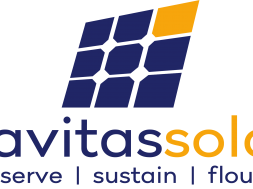
Gujarat State fostering Renewable Energy Penetration by implementing favorable policies – Mr. Vineet Mittal, Director & Co-Founder, Navitas Solar – EQ
To achieve nation’s target of becoming net zero by 2070 and to install 500 GW of Renewable Energy by 2030, State governments are also active to encourage renewable energy’s penetration in their respective states. In the August 2023 Gujarat State Renewable Energy Policy- 2023 was declared for further encouraging setting up of renewable generation projects based on Wind, Solar and Wind-Solar Hybrid technologies.
Gujarat State has successfully demonstrated its commitment towards clean energy with installed Renewable Capacity of 20 GW at present in which the addition of about 11 GW has taken place during last 4 years.The State’s policy aims to facilitate development of 100 GW of cumulative Renewable Energy capacity by 2030 with investments of around Rs. 5 lakh crores by utilizing approximately 4,00,000 acres of land.
There is no capacity restriction for setting up of RE projects for captive use or for selling electricity to third party consumer with respect to the consumer’s sanctioned load. Floating or canal-based solar projects are to be implemented in consultation State water control government. Gujarat Government is encouraging Solar parks, wind parks and Solar Wind Hybrid parks on government or private land.The minimum capacity of RE park shall be 50 MW and the maximum park capacity shall be in accordance with the guidelines or schemes of MNRE.
The Wind Solar Hybrid projects has two categories: A type projects includes the conversion of existing or under construction Standalone wind or solar power plants into hybrid projects. Type B projects includes new wind-solar hybrid power generation projects. DISCOMs may procure power from distributed solar projects up to 4 MW capacity and small size wind power projects up to 25 MW capacity at a pre-fixed levelized tariff as per the mechanism decided by GERC.
To enable consumers to voluntarily shift towards renewable energy, DISCOM shall supply 100% renewable energy upon requisition for RE power made by such consumers at a Green Power Supply Tariff, as determined by GERC. With RE integration in the grid, there is a need to maintain voltage as RE integration may be able to fluctuate the voltage.
To regulate the state’s grid effectively, SLDC need to monitor the data of RE projects continuously. So, the RE developers are required to install Remote Terminal Unit (RTU) at the RE project for transferring the real time data to the Load Dispatch Centre. RE projects are eligible for Carbon credits that include CERs, VERs, Gold Standards, or any other standards adopted at the national or international level for the issuance of carbon credits for renewable energy projects.
As per the recent data from MNRE, India has already installed 130.88 GW of renewable energy including 71.11 GW of Solar energy which can be considered as a milestone in the transitional journey of the country. We at Navitas Solar acknowledge and appreciate the state government’s efforts for encouraging clean technologies.














